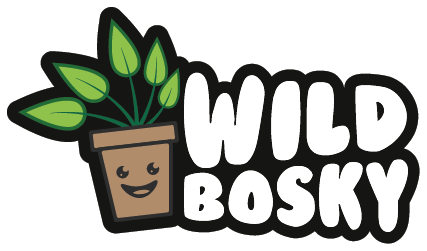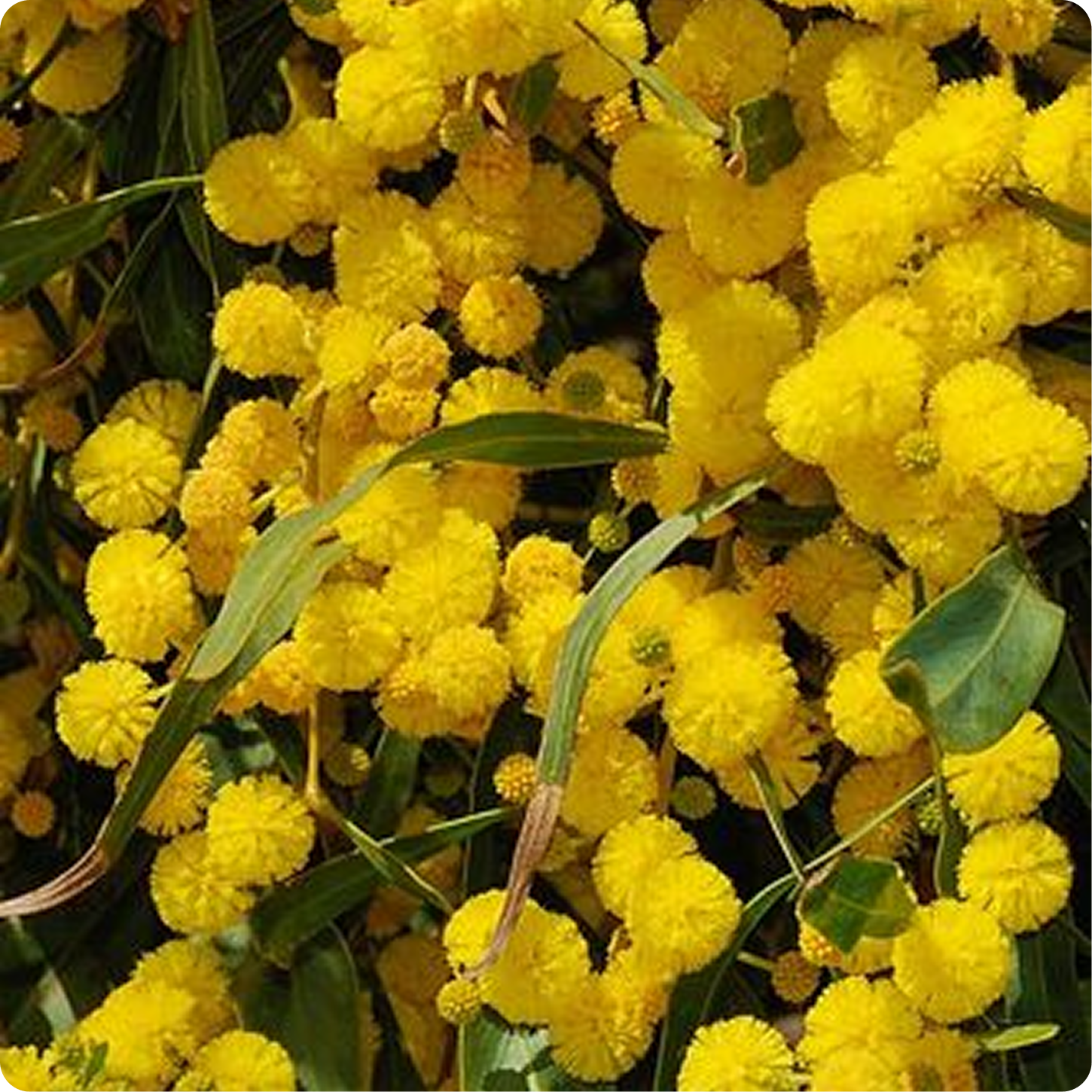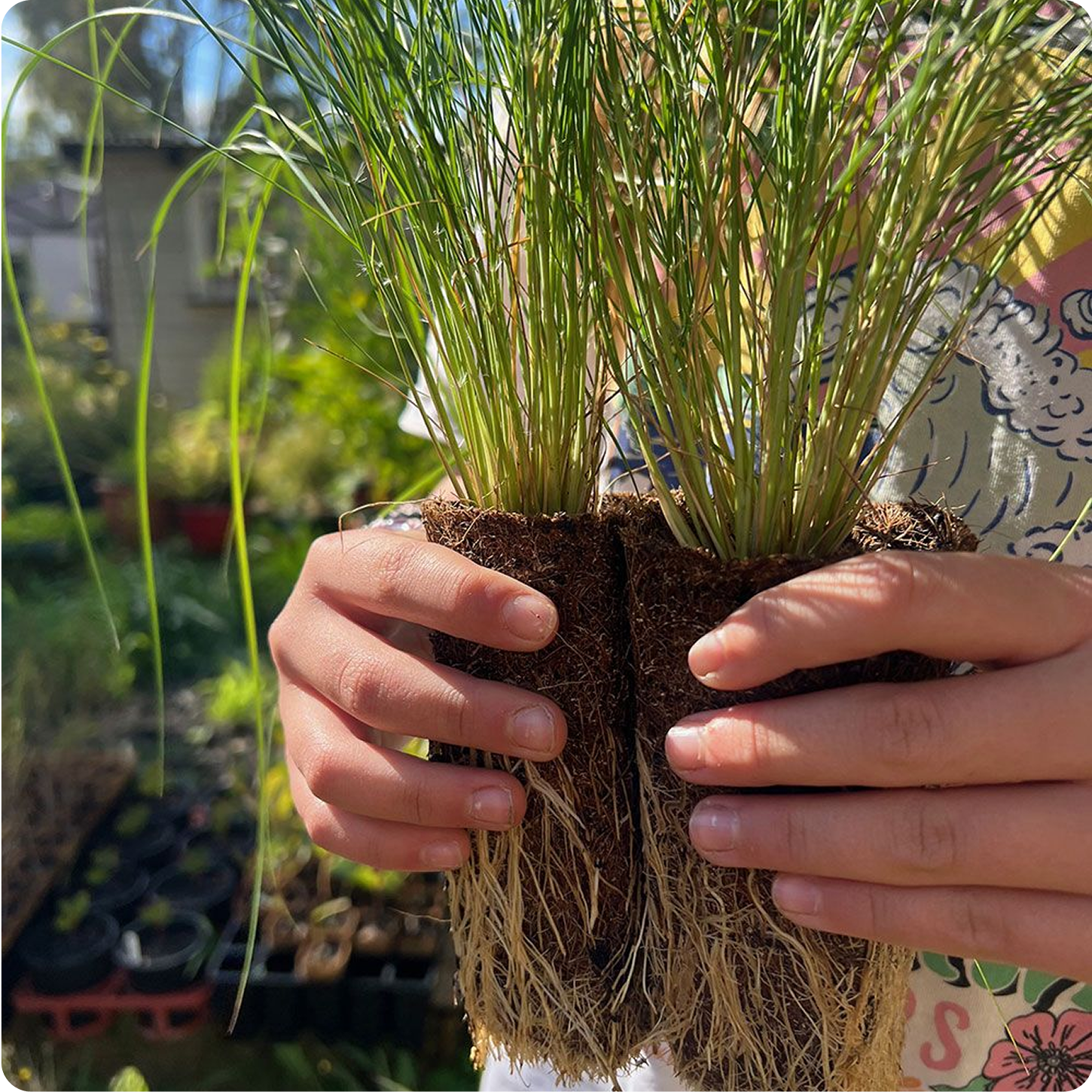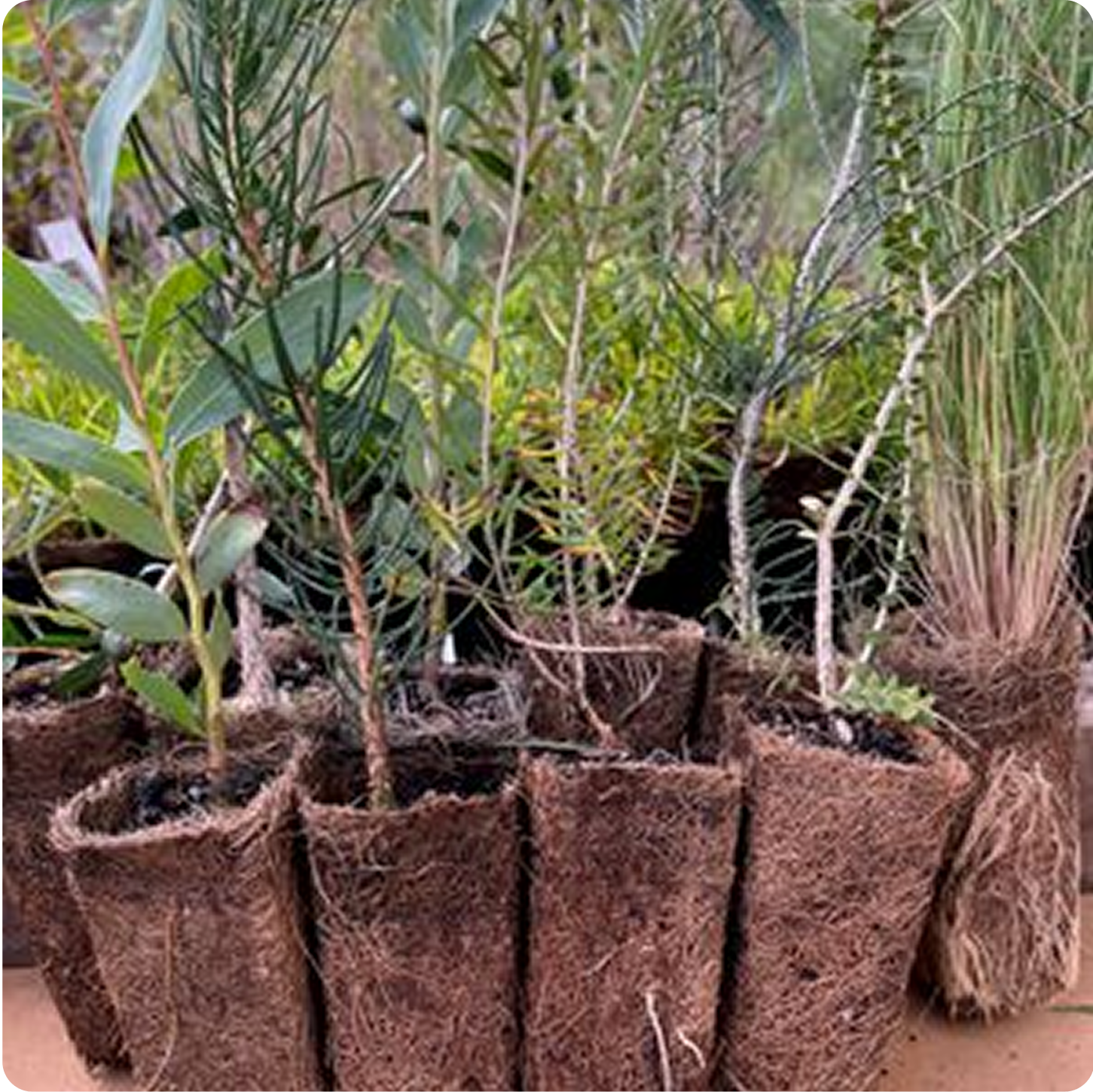Bird & Bee Attracting
🐝 Bird & Bee Attracting 🦜
Bring your garden to life (literally). These native beauties are irresistible to local birds, bees and butterflies — perfect for creating a buzzing little ecosystem out back.
Sort by:
60 products
60 products
Melaleuca stereophloia is an attractive large shrub growing up to 4 metres. With fine leaves and lovely yellow cream bottle brush like flowers, it provides habitat and nectar for honey eaters and thornbills who love the flowers in late winter and spring.
Being a large multi-branched shrub its perfect to include in a habitat corridor, benefiting birds and insects while providing screening and privacy.
Eucalyptus kochii, also known as oil mallee, an eucalyptus that encapsulates the wild essence of the WA wheatbelt. A small multi-stemmed mallee growing from 3 to 8 metres. This species is renowned for its exceptional high-quality eucalyptus oil and cream-coloured flowers during summer, attracting pollinators.
Eucalyptus kochii is a symbol of environmental care, essential for land rehabilitation and reforestation. It thrives in diverse soil types, from sandy to loamy, and is drought resistance. It acts as an effective windbreak and helps in controlling soil erosion.
Calothamnus quadrifidus, commonly known as one-sided bottlebrush, has distinctive red clustered flowers on one side of it's stems, narrow prickly leaves and grows up to 3m. It is popular in native gardens for its ability to attract birds and pollinators and providing protective habitat for Quenda's and birds. It is also drought tolerant, has a long flowering season and long living.
It's perfect for screening, wind breaks and creating a habitat corridor by adding diversity.
The Jam Wattle, Acacia acuminata, is a hardy, fast growing small tree up to 3 metres. Common around Perth and a part of our natural landscape.
Thriving in well-drained soils, including gravelly and loamy types, also drought tolerant.
It's timber has a raspberry jam like aroma when cut, which is where it's common name comes from. It is also well known for its golden yellow, rod shaped flowers in late winter to spring.
It plays a crucial role in supporting local biodiversity, especially a specific mistletoe that attracts mistletoe birds, bees, and butterflies, turning gardens into lively ecosystems.
Eucalyptus erythrocorys, commonly known as red-capped gum, or illyarrie, is a striking small tree, growing from 4-8 metres, known for it's red caps and bright yellow flowers seen from late summer through to autumn.
Eucalyptus erythrocorys is popular in Perth gardens and hills properties because of it's ornamental features and ability to attract birds and other pollinators. It loves well-drained soils and sunny positions.
Eucalyptus erthroneama, commonly known as red-flowered mallee, is a small multi-branched tree growing from 2-6m, perfect in all Perth gardens.
Everything about this mallee is attractive, it has smooth, dark pink to red bark that is shed to reveal whitish trunk, and has lance-shaped adult leaves, pendulous flower buds and lots of red flowers and conical fruit.
Commonly called round leaved mallee, Eucalyptus orbifolia is a small tree, growing 2 to 5 metres, from central WA features distinctive grey-green rounded leaves, and clusters of pale yellow blossoms that attract birds, bees and other pollinators. Its eye-catching foliage is perfect for creating an attractive focal point in your outdoor space.
The round leaved mallee is known for its attractive reddish shedding bark, described as 'minniritchi', continually peeling in curls to expose lighter back underneath.
Ideal for those seeking a low-maintenance addition to their garden, Eucalyptus orbifolia thrives with minimal care. Its slow growth rate ensures that it remains manageable, while its unique appearance continues to captivate throughout the seasons.
Introducing the Salt Lake Honey Myrtle (Melaleuca thyoides), its evergreen interesting scale-like leaves and brush flowers, ranging from cream to yellow and occasionally pink. Ideal for screening, habitat and food for local birds and adds diversity to rewilding on your property.
Beyond its aesthetic appeal, the Salt Lake Honey Myrtle symbolises resilience. It thrives under diverse conditions, from coastal environments to inland heat, showing remarkable drought and frost tolerance. This plant's ability to stabilise sandy soils makes it a key player in landscape design, ensuring a verdant sanctuary in all weather.
Its foliage shelters numerous bird and insect species, enriching your garden with vibrant wildlife.
Melaleuca cuticularis, also known as the saltwater paperbark, is a hardy and attractive small tree (7 metres) ideal for wet or saline environments, but also thrives in sandy clay, loamy clay and clay soils. It grows along our coast line from Perth around to Esperance.
With its distinctive white papery bark, lush green foliage and creamy white bottlebrush flowers, it adds beauty and function to landscapes.
Saltwater Paperbark is perfect for eco-friendly gardening, requiring little water and minimal care. Adaptable to both sunny and shaded areas, it helps maintain ecological balance by fostering local ecosystems. This versatile shrub offers both aesthetic appeal and functional benefits, making it a superb choice for sustainable landscapes.
Hakea petiolaris, or sea-urchin hakea, is a commonly seen hakea in the Perth hills bushland. It is a distinctive small tree (6m) with board leaves, open branches, woody seed pods and large pink/purple sea urchin-like flowers. Flowers mainly in winter to spring attracting pollinators to your garden.
Great addition to you native garden, adding height and texture, while enhancing local biodiversity.
Melaleuca nesophila commonly known as Showy honey-myrtle because of it's long flowering time with beautifully pink to purple pom-pom flowers. Attractive ever-green aromatic foliage growing up to 4 metres.
A native that ticks all the boxes in terms of providing resources for birds and insects, while adding beauty into your garden. The showy honey-myrtle is also used for screening.
Silver gimlet or Eucalyptus campaspe grows from 3 to 10 metres and has smooth, shiny, silver to coppery bark and twisted stems. It gets its name from its grey green foliage that gives a silver appearance.
Flowering occurs between January and March and the flowers are white. Silver gimlet grows into a beautiful tree that's not too big to be grown along a fence line or as a feature tree.
Acacia lasiocalyx, commonly known as the silver wattle is an open often weeping large shrub, growing into an attractive tree of 5 meters. It has long thin leaf-like foliage showing its weeping character. It has a large amount of flowers from late winter into spring with yellow wattle flowers.
The Silver wattle would work well in a screen habitat corridor, providing shelter and resources for birds and insects.
Beyond its beauty, the Tall Saltbush offers a feast for honeyeaters with its red berries.
Perfect for under-canopy growth, the Tall Saltbush shows remarkable adaptability. It flourishes beneath taller trees. This low-maintenance shrub is well-suited to erosion control, habitat restoration, low-water landscaping while supporting local wildlife.
Eucalyptus wandoo is a long-lived and iconic WA tree renowned for its smooth, pale grey to white bark and strong, durable hardwood. Reaching heights of 3 to 25 metres, it typically grows in the SW wheatbelt and woodland regions, where it plays a crucial ecological role by providing habitat and food for birds such as the black cockatoos.
It has glossy green leaves and creamy white flowers, which appear in summer, providing a life line to bees through our hot summers.
Erect, compact shrub growing to 2.5 metres, the Robin redbreast bush, or Melaleuca lateritia, has soft, narrow green foliage and thrives in sandy well-drained soils. Admired for its reddish orange bottlebrush flowers that bloom from spring through summer, which often attract nectar-loving birds like honeyeaters.
It grows in the Perth area and surrounds, is low maintenance and drought tolerant once established. Great for habitat, attracting pollinators and all local gardens.
Melaleuca cardiophylla, also known as Tangling Melaleuca, is a charming and resilient WA native shrub that brings year-round interest to any garden. With its slightly prickly, heart shaped foliage and profusion of creamy white flowers in spring and summer, it creates a visual display while attracting birds, bees and beneficial insects.
Naturally suited to sandy and gravely soils, this hardy species thrives in full sun and tolerates drought, coastal conditions, and light frosts. It is a dense, spreading shrub growing to 2m.
Perfect for native gardens, screening, hedging and habitat for local fauna.
Kunzea glabrescens, also known as spearwood, is a stunning and hardy medium shrub (2-4m) that makes a striking addition to your garden. With its fine, aromatic foliage and soft yellow bottlebrush like flowers that bloom in spring, it attracts pollinators like bees and butterflies.
Naturally found in the Perth and surrounding areas, it thrives in well drained soils and adapts well to coastal or inland conditions.
Ideal for native landscaping, screening, erosion control, Kunzea glabrescens offers low-maintenance beauty and ecological benefits.
Eucalyptus utilis, commonly known as Coastal moort, is a small, hardy mallee growing from 2-15m. It has a short trunk, branches with a spreading habit, smooth grey bark that peels off in ribbons revealing pale coppery bark beneath.
In late spring to summer it produces creamy white flowers that attract birds, bees and other pollinators. Adult leaves are thick, a shade of glossy olive green on both sides, egg-shaped to lance-shaped.
Eucalyptus utilis is highly tolerant of coastal winds, poor sandy soils, and drought, making it an ideal choice for coastal gardens, shelterbelts, wind breaks and habitat corridors.
Showing 40/60













































